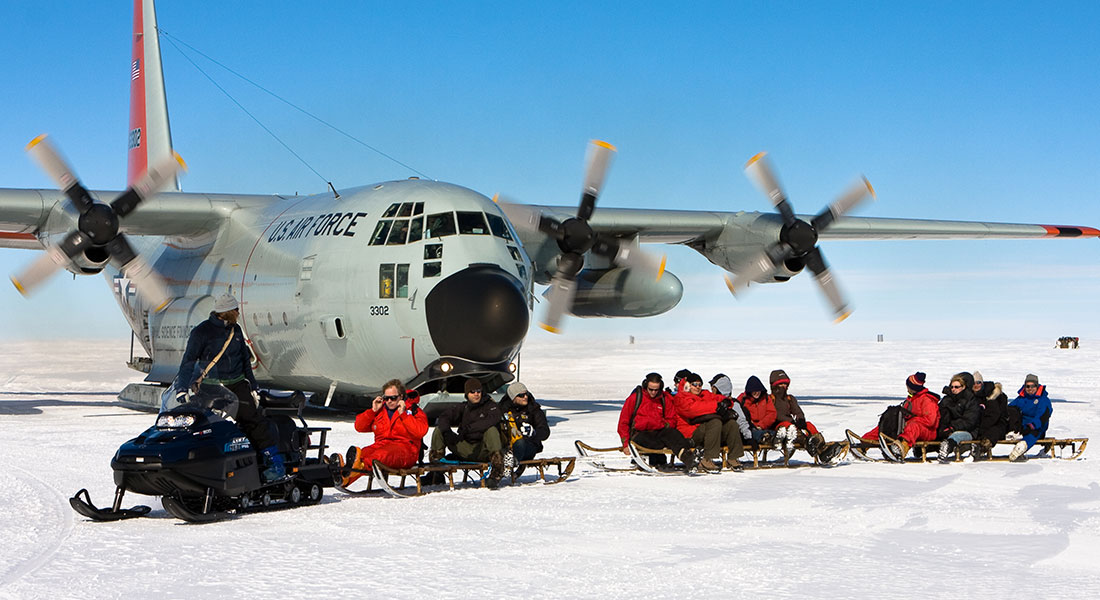Climate Theory Group
MSc projects in Climate Theory.
Contact: Johannes Lohmann and Peter Ditlevsen
Self-organization and pattern formation in ecosystems: Warning sign or sign of resilience?
Several large ecosystems are at risk of an irreversible, abrupt transition to a qualitatively different state. For instance, drylands in semiarid climates face desertification as water supply decreases, wildfires intensify, or human activity increases. Similarly, large rainforests may undergo an abrupt transition to a savannah state. Such shifts of entire ecosystems are thought to result from positive feedback that become dominant at a tipping point and lead to a runaway effect causing rapid vegetation change throughout the system. But these beliefs are based on a simplified theory of tipping points that neglects several spatio-temporal effects, including spatial heterogeneity and scale-dependent feedback. With such effects, instead of a direct transition from, e.g., a homogeneous forest to a savannah, stable fragmented states with partial vegetation cover may be attained by the system, or even a sequence of different semi-regular (Turing) patterns of mixed vegetation may arise. It is currently debated whether the successive appearance of such patterns could serve as an early-warning sign of a nevertheless impending tipping of the entire system, or whether it is in fact a sign of resilience of the system, preventing and replacing irreversible system-wide changes altogether.
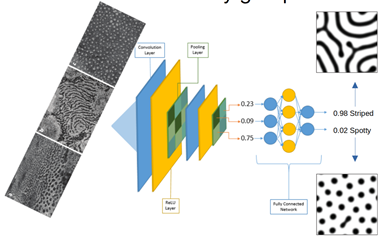
Project 1
Observational evidence for either of these viewpoints shall be gathered by mapping pattern forming ecosystems globally on different scales from satellite imagery. Types of vegetation patterns are classified automatically using machine learning models trained on images with known Turing patterns (e.g. bare gap, labyrinth, striped or spotty vegetation), as well as on images with local coexistence of these and fractal vegetation cover. The resulting data set is then correlated with the associated environmental conditions and rates of change at the locations, in order to identify a characteristic sequence of patterns. Alternatively, the model may be extended to directly consider observed environmental parameters as additional features. The spatial survey of satellite data can be complemented with analysis of the temporal evolution at individual sites where long-term data is available. A mechanistic understanding shall be reached by synthesizing the results with idealized pattern-forming models (e.g. reaction-diffusion equations).
Project 2
The same problem is investigated theoretically using models that describe the dynamics of spatially extended ecosystems. These could be conceptual models such as reaction-diffusion models or state-continuous Ising-type models, or simple models specifically designed to describe forests or grasslands. Different stable vegetation patterns are found numerically, and the bifurcations of these patterns are investigated as a control parameter is changed. In the case of high multistability it will be interesting to find out whether the trajectories to a collapsed state are qualitatively unique, or whether they can depend sensitively on initial conditions and forcing rate. This has implications for the predictability of ecosystem collapse. Further, the role of spatial heterogeneity in system and forcing, as well as the relative importance of equilibrium versus transient dynamics is investigated. Finally, it may be tested whether similar dynamics are observed in simulations with the land-surface component of a state-of-the-art coupled climate model.
Multistability and tipping points in the climate as a very high-dimensional system
It is a growing concern that the Earth system may be crossing several tipping points (TPs), due to non-linear feedback processes that have been initiated in several climate sub-systems by global warming. TPs are believed to be abrupt, singular, and irreversible events. This is based on the conventional theory of TPs in low-dimensional systems, which assumes one dominant positive feedback that gives rise to a bi-stability of the system, comprising one desirable present-day state and one undesirable, catastrophic state. Tipping is the transition from one state to the other by changes in boundary conditions or external perturbations. The current theory suggests that such transitions may be anticipated by measuring increased fluctuations in climate observations. However, this theory does not properly take into account that the climate is a heterogeneous system with a vast number of spatio-temporal scales and chaotic dynamics that are driven out of equilibrium by human activities. Novel work suggest that this can lead to extensive multi-stability (a multitude of alternative stable states) and corresponding intermediate TPs, which makes the task of anticipating a regime shift ambiguous. In addition, the chaotic non-equilibrium dynamics can lead to abrupt transitions before actually reaching a TP, further limiting predictability.
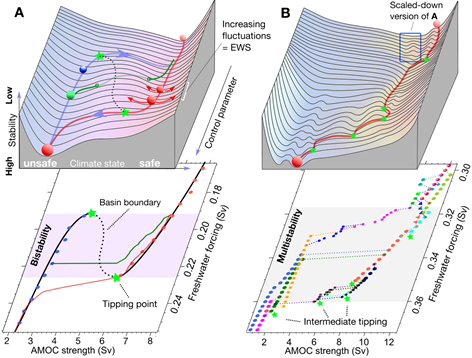
MSc thesis projects are offered that build on recent results in our group to examine the structure of a TP in a high-dimensional system in more detail. Projects 1-3 consider the collapse of the Atlantic meridional overturning circulation due to increased Arctic melt in an ocean-only general circulation model (Veros). In project 4, a collapse of the Greenland ice sheet as a response to rising surface temperatures is simulated. All projects use tools from statistical mechanics and fluid dynamics to map the stable and unstable dynamical regimes as a function of the control parameter. Within the framework of non-autonomous dynamical systems, it is analyzed whether there are generic precursors of abrupt changes, and whether this holds for a system far from equilibrium.
Project 1
Previous simulations of an AMOC collapse with the Veros model performed by our group used a model version without active sea ice component. Since sea ice directly influences air-ocean heat exchange, it can strongly alter the AMOC by modulating deep water formation. It is thus important to test the influence of sea ice dynamics on the multistability and tipping of the AMOC. To this end, hysteresis simulations will be performed using Veros in conjunction with a recently developed sea ice component.
It shall be investigated whether the collapse of the AMOC becomes more abrupt, and whether it is more or less fragmented by intermediate tipping points, as compared to the case without sea ice dynamics. Additionally, a temperature forcing due to global warming may be added to the freshwater forcing to increase realism of the sea ice response.
Project 2
It is tested how the stability of different AMOC states changes as atmospheric noise is added to the ocean model. Ensemble simulations will be performed to estimate transition probabilities and paths in between the coexisting states, and compared with theoretical results from large-deviation theory. Further, it may be investigated whether atmospheric noise is "invasive", in the sense that it can provide energy to change the mean state of the AMOC, and not only its variability. In the project, different types of noise may be investigated (e.g. discrete perturbations from volcanic eruptions). Since previous simulations with the ocean-only model did not show characteristic increases in the AMOC fluctuations before its collapse, it may be tested if early-warning signals are recovered if excited by noise.
Project 3
Our previous work shows an abundance of small-scale tipping events, but the exact nature of these events (so-called attractor crises) has not been determined yet. It is not known whether these events fall into a few classes, or indeed all follow a common pattern that gives rise to a universal early-warning signal. To find out, output of the model simulations will be analyzed within the framework of transfer operators and response theory.
Project 4
A collapse of the Greenland ice sheet is simulated with the PISM ice sheet model. In the context of anthropogenic climate change, ice-sheet tipping is special because the ice dynamics are the slowest of all climate sub-systems, besides solid-earth processes on geological time scales. At the same time, the mechanism behind the tipping (ice-elevation feedback) is well-established, being based on very simple physics. Tipping is thus relatively certain if the forcing continues to increase. But since the dynamics are slow compared to the driving changes in temperatures, the system is far out of equilibrium. It shall be investigated how these non-equilibrium dynamics manifest themselves in the fluctuations of mass balance, and whether this negatively affects predictability of a collapse. It shall be investigated whether there are more subtle reorganizations of the ice sheet before its complete collapse due to higher multistability, and whether the trajectory towards the collapse depends in the initial conditions. The effect of the inclusion of atmospheric noise can also be studied.
Prediction of an AMOC collapse in the laboratory
Research on tipping points in natural systems is performed from many angles, including basic mathematical research, development and simulation of process-based models, as well as reconstruction and data analysis of past regime shifts. But controlled laboratory experiments are rarely performed, and would nevertheless provide important alternative insights into the still very poorly understood notion of tipping points in high-dimensional, heterogeneous real-world complex systems. We are building a laboratory analogue of the Atlantic Meridional Overturning Circulation (AMOC) in order to test a variety of key assumptions and predictions of tipping point theory in a physical system. Depending on the phase and progress of the overall project, a MSc student can perform their thesis by constructing, testing and exploring a prototype ocean setup, or by performing measurements on the finished setup, investigating individual aspects of the overall agenda. These aspects include finding evidence for rate-induced and non-equilibrium tipping, revealing clustered multistability by introducing heterogeneity, as well as exploring potential early-warning signals and fingerprints.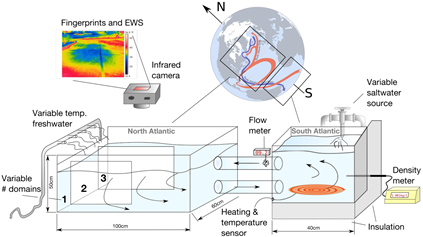
Causality and climate change
While there is overwhelming scientific consensus that the rise in global temperatures since the pre-industrial period is caused by human emissions of greenhouse gases into the atmosphere, there had also been changes in temperature as well as greenhouse gas concentrations in the past. Analyses of ice core data concluded that while CO2 levels and temperatures are strongly correlated over time scales of millennia and longer, changes in CO2 lag behind temperatures by roughly 500 years. This is often used as an argument by skeptics questioning the causality of anthropogenic climate change. The seemingly passive reaction of CO2 to temperatures is explainable by simple feedback, such as increased outgassing by the oceans, and does not contest the accepted mechanisms of anthropogenic climate change. Still, due to simplistic methods used to analyze the data until now, it is an outstanding question to what degree CO2 was also a driver of large climate changes in the past. This project revisits the analysis of ice core data by inferring actual causality (in a mathematical sense) between CO2, temperature proxies, and changes in incoming solar radiation.
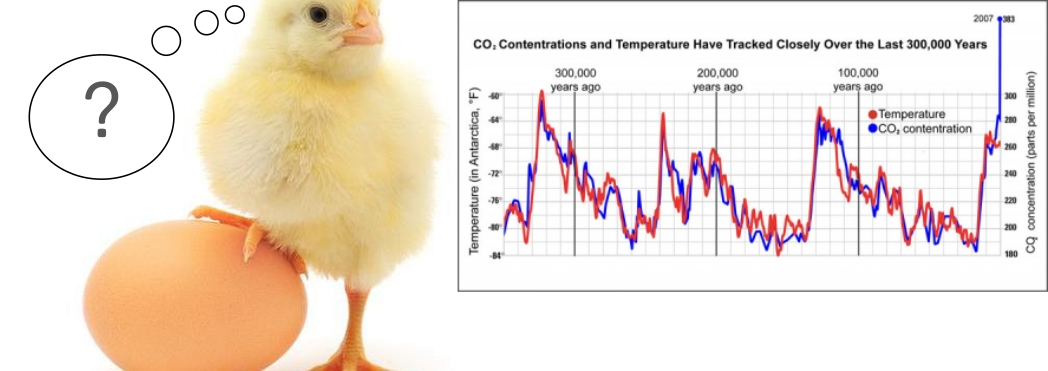
Questions of causality in applied sciences are typically investigated by simple lagged correlation analysis in between two variables. But in highly coupled real-world systems like the climate, causality is much more subtle and requires careful statistical treatment. By using advanced methods from information theory, as well as focusing on different time periods and time scales, this project will contribute to a more nuanced discussion of which causalities exist in the Earth system and how they can be best measured. Through a deeper understanding of the different methods, reflections can be made on the usefulness of respective ways to measure causality in such a high-dimensional coupled system.
Chaos theory of abrupt climate change
Even though anthropogenic climate change is already causing considerable damage across the globe,

The latter have been re-occurring repeatedly during the last ice age, but in a very irregular manner. While this suggests a stochastic nature of the underlying driver, several lines of evidence now point at a deterministic mechanism. In this project, it shall be attempted to reconcile these two views by deriving dynamical systems models for past abrupt climate changes from idealized feedback processes in between components of the climate system. It will be explored how the models can display chaotic dynamics and explain the fundamental characteristics of past abrupt climate change in a deterministic way. The project furthermore gives opportunities to perform fundamental research in dynamical systems theory.

